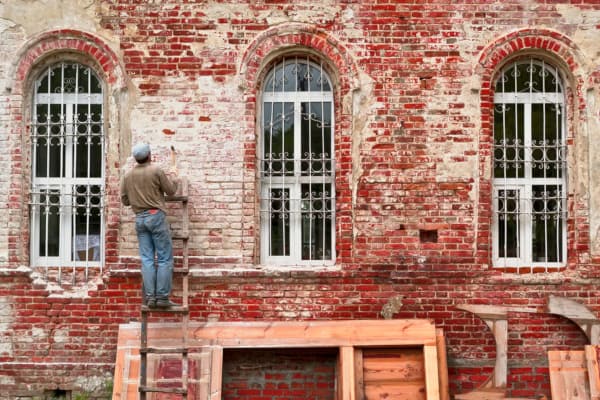The NFPA fire safety essentials while rehabbing a historical structure
In 2019, the Notre Dame Cathedral was severely damaged by fire. Mostly completed in the 13th century, it is more than just a house of worship. It is a cultural symbol, an iconic landmark, and a historically significant structure. And this was only the most recent of historical landmark fires.
Numerous other historical structures have had a similar fate. Significant recent examples include the National Museum of Brazil (2018), the Honey Run covered bridge in California (2018), and India’s National Museum of Natural History (2016).
The workmen who will rebuild these structures are contractors and craftsmen who have dedicated a lifetime to preserving historic structures. It will be their responsibility to return these landmarks to their former glory (or better).
Historical building managers have a serious responsibility to safeguard these treasures from fire, especially during repair or rehabilitation projects that increase the risk. Applying NFPA model codes to achieve fire safety in historic buildings is essential.
NFPA 101 requirements for rehabilitation
The rehab requirements for fire safety in historic buildings lie within chapter 43 of NFPA 101: Life Safety Code: “Building Rehabilitation.” This section points to three options for fire protection and life safety in historic structures:
From the 2018 edition of NFPA 101
43.10 Historic Buildings.
43.10.1 General Requirements. Historic buildings undergoing rehabilitation shall comply with the requirements of one of the following:
(1) Section 43.10
(2) Sections 43.3, 43.4, 43.5, 43.6, 43.7, as they relate, respectively, to repair, renovation, modification, reconstruction, and change of use or occupancy classification
(3) NFPA 914, Code for Fire Protection of Historic Structures
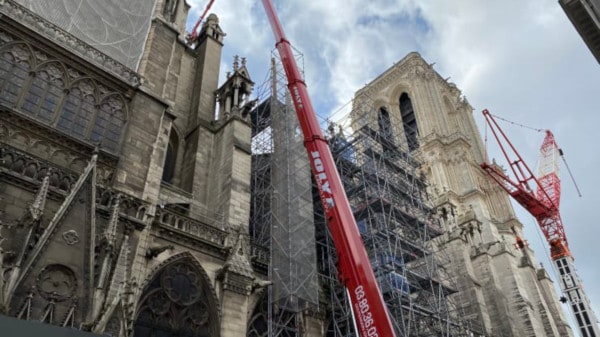
Using common terminology
Before getting into the details, we must define some terms used in this section of NFPA 101. Understanding them ensures that the correct requirements for the intended work are applied. Foremost of these definitions is “historic structure.” What defines a building as being “historic” and therefore calls for specific fire protection and life safety requirements?
From the 2018 edition of NFPA 101
3.3.37.8* Historic Building. A building or facility deemed to have historical, architectural, or cultural significance by a local, regional, or national jurisdiction.
The other terms that need to be defined relate to the type of work that will be performed on the historic structure. Is this a repair, renovation, modification, reconstruction, or a change of use or occupancy classification? These are defined in section 43.2.2:
From the 2018 edition of NFPA 101
43.2.2.1.1 Repair. The patching, restoration, or painting of materials, elements, equipment, or fixtures for the purpose of maintaining such materials, elements, equipment, or fixtures in good or sound condition.
43.2.2.1.2 Renovation. The replacement in kind, strengthening, or upgrading of building elements, materials, equipment, or fixtures, that does not result in a reconfiguration of the building spaces within.
43.2.2.1.3 Modification. The reconfiguration of any space; the addition, relocation, or elimination of any door or window; the addition or elimination of load-bearing elements; the reconfiguration or extension of any system; or the installation of any additional equipment.
43.2.2.1.4* Reconstruction. The reconfiguration of a space that affects an exit or a corridor shared by more than one occupant space; or the reconfiguration of a space such that the rehabilitation work area is not permitted to be occupied because existing means of egress and fire protection systems, or their equivalent, are not in place or continuously maintained.
43.2.2.1.5 Change of Use. A change in the purpose or level of activity within a structure that involves a change in application of the requirements of the Code.
43.2.2.1.6 Change of Occupancy Classification. The change in the occupancy classification of a structure or portion of a structure.
Breaking this down:
- If you are restoring an existing building component, it’s a repair.
- Are you replacing or upgrading any building component or spaces? Then it’s a renovation.
- Are you reconfiguring a space or changing the layout of the floorplan? It is a modification.
- Will the modifications result in a change or elimination of egress or fire protection systems? The work is reconstruction.
- Are you changing the way the building is being used? This is a change of use or occupancy classification.
Any work done on a historical structure must comply with section 43.10 of NFPA 101 and the specific subsection that applies to the particular type of work being performed.
Evaluating the historic structure and building systems
The restoration process for a historical structure starts with a written report submitted to the authority having jurisdiction (AHJ), typically a local building official. This document must be completed by a registered design professional or licensed contractor, and someone knowledgeable in historic preservation.
This evaluation aims to provide evidence of the structure’s historical significance and identify the fire protection and life safety features in place. It will present how upgrades and provisions of these safety features may be damaging to the structure’s historical significance, and demonstrate how equivalent measures meet the intent of the code requirements.
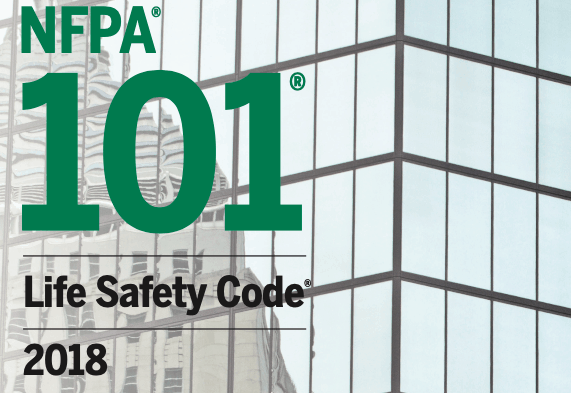
Life safety is the primary goal for fire safety in historic buildings
While property protection is also a priority, the primary concern of NFPA 101 is life safety, and the majority of its prescriptions for historical structures apply to exit and egress: ensuring people can safely and efficiently get out of the structure in an emergency. The following components that affect egress are addressed in section 43.10:
- Corridor width
- Interior finishes
- Enclosures and fire-rated assemblies
- Handrails and guards
- Exit signage
- Fire sprinkler systems
Certain exceptions to standard code requirements apply to historical structures in specific circumstances. Window and door openings and corridor and stair widths that do not meet the minimum requirements of the Life Safety Code are allowed to remain in use with no change, provided that a person can “pass through the opening or traverse the exit,” and it is adequate for the occupant load. Additionally, operational features can be put in place to limit the number of occupants permitted within the space at one time, thus providing for sufficient means of egress.
Modern interior finishes are required to meet the flame spread and smoke production index requirements in chapter 10 of NFPA 101. However, it is understood that historical buildings will likely have interior finishes that were installed before the rating system, or documentation of the material’s rating is impossible to obtain. In this case, the interior finish can remain if it is coated with fire-retardant paint or finish, or if an automatic fire sprinkler system protects the building.
In structures that are no higher than three stories, exit stairwells do not have to be enclosed, and the prevention of smoke spread can be obtained by using “tight-fitting doors and solid elements.” These items do not have to be fire-rated. Any walls that are constructed of wood lathe and plaster are allowed to remain and can be used in place of any required one-hour fire-rated wall or ceiling.
Guards and handrails in grand stairways are exempt from the height and spacing specification of chapter 7, provided that they are in good condition. Likewise, the exit signage requirements of chapter 7 do not have to be met, as long as the exits and direction are clearly marked.
A fire sprinkler retrofit will be required in buildings that do not meet the minimum fire safety construction requirements for their occupancy classification (how the structure will be used). Additionally, if the AHJ determines that a fire safety hazard exists, he or she can require fire sprinklers.
The NFPA 914 Rehabilitation Plan
Another option for the rehabilitation or use of historical structures is the application of NFPA 914: Code for the Protection of Historic Structures. This standard lays out a clear plan for engaging in addition, alteration, or rehabilitation of a historic structure.
The first and perhaps most critical step is selecting the right contractor for the job. The contractor and their quality of workmanship can make or break the project. It is vital to choose a professional who has a wealth of experience in working with historic structures. An experienced contractor will be familiar with the tools and materials and the allowances and requirements of the fire and building codes. They can also provide options and suggestions for equivalencies and compliance.
Before starting work on the project, the contractor, subcontractors, and building representatives should conduct an introductory meeting. Its purpose is to make all necessary parties aware of the historical significance of the structure and the scope and expectations of the work, and ensure that they understand the project’s fire safety program.
The management of the historic structure must appoint a representative. It will be this representative’s responsibility to monitor the work being performed and ensure that all parts of the fire safety program are followed. These program elements include maintaining a hazard-free environment, ensuring that debris and tools are cleaned up at the end of each workday, monitoring any hot work program, and handling fire sprinklers and other fire protection equipment operations and issues.
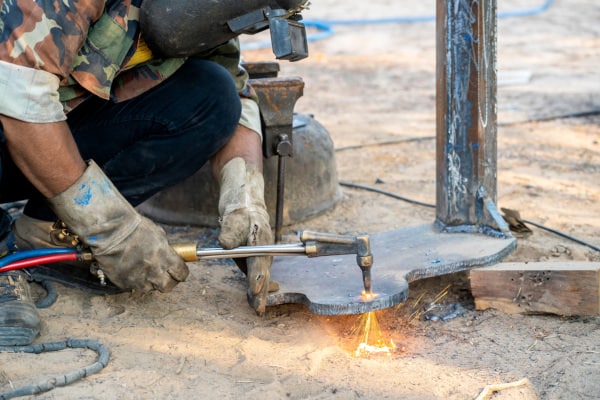
Rehabilitation of building and fire protection systems—is a fire sprinkler retrofit necessary?
Various steps must be taken to ensure fire protection systems are maintained, upgraded, and work as intended:
- New items added to the compartmentation of the structure are designed to prevent and control the spread of fire. New doors, shafts, and dampers must be self-closing or designed to close automatically in the event of a fire. Any penetrations in fire-rated assemblies, new or existing, must be appropriately fire-stopped.
- Commercial kitchens need to be protected by a hood suppression system following NFPA 96: Standard for Ventilation Control and Fire Protection of Commercial Cooking Operations.
- The installation of a fire alarm system is required. The system must be installed following NFPA 72: National Fire Alarm and Signaling Code.
- Fire extinguishers must be installed on every floor in accordance with NFPA 10: Standard for Portable Fire Extinguishers.
- Automatic fire sprinklers, standpipes, and other fire suppression systems may be required based on the building’s planned use and occupancy classification. Integrated systems must be commissioned and tested following the guidance provided in NFPA 3: Standard for Commissioning of Fire Protection and Life Safety Systems and NFPA 4: Standard for Integrated Fire Protection and Life Safety System Testing.
- Existing roof coverings and interior finishes need to be treated with fire-retardant material. Records of the application are to be maintained by the building management. New interior finishes must meet the flame-spread and smoke-development requirements of code based on the building’s occupancy classification. Any newly constructed hazardous areas must be separated from the rest of the building by a one-hour fire-rated barrier.
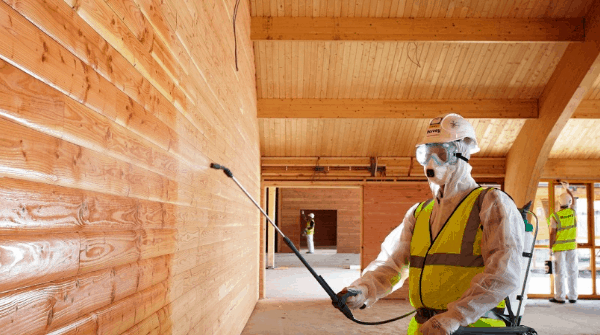
- Electrical systems should be evaluated. Any safety deficiencies must be repaired and updated. These repairs and any new electrical installations have to comply with NFPA 70: National Electrical Code (NEC).
- Where the building is within a wildland/urban interface (WUI), the provisions of NFPA 1144: Standard for Reducing Structure Ignition Hazards from Wildland Fire This document governs to structures that are located in wooded areas or surrounded by fire-prone and heavy vegetation. It is the responsibility of the building owner and representative to have a professional landscape architect evaluate the fire hazards associated with the WUI environment. The recommendations of the architect should become part of the structure’s fire protection program.
The Historical Rehabilitation Fire Safety Checklist
With many moving pieces and the army of personnel that a historical rehabilitation often requires, ensuring fire safety can seem like a daunting task. But our historical rehabilitation guide provides a checklist of items to assist in planning:
Download QRFS’s Historical Rehabilitation Fire Safety Checklist to review NFPA requirements.
Please note that local code may vary from NFPA model codes. Thus, always consult with your local authority having jurisdiction (AHJ) to ensure compliance.
If you have questions, call us at +1 (888) 361-6662 or email support@qrfs.com.
This blog was originally posted at blog.qrfs.com. If this article helped you, check us out at Facebook.com/QuickResponseFireSupply or on Twitter @QuickResponseFS.


